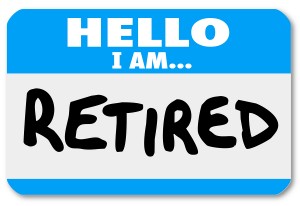For decades, the United States was the beacon for retirement pension plans, whether they were at the public or private level. Workers and retirees would be content that the money they invested in the system would be there for their retirement years and each person would receive a conservative return on their investments.
In today’s economy, the U.S. may no longer be the shining example of what a public or private pension plan should be, at least according to a new research report that shows U.S. pensions are in a dire state.
The country’s 401(k) pension system will transform into cash flow negative in 2016 that could pressurize disturbance for asset managers and equity sales. The analysis, performed by Cerulli Associates, found that the $3.5 trillion system received new contributions of $300 billion two years ago with $276 billion that was either withdrawn as cash by retirees or rolled over into individual retirement accounts (IRAs).
 Within the next two years, the research house projects inflows will be $364 billion and outflows will be $366 billion. The deficit will widen each year, especially when the Baby Boomer generation hits retirement.
Within the next two years, the research house projects inflows will be $364 billion and outflows will be $366 billion. The deficit will widen each year, especially when the Baby Boomer generation hits retirement.
The Financial Times lists Fidelity Investments; Canada’s Power FinancialTIAA-CREF; Vanguard; ING of the Netherlands; and Prudential Financial of the U.S. as the largest 401(k) managers in the market.
“This has significant implications for asset managers and other financial services providers. It is going to be a disappointment for a lot of fund managers that have put a lot of effort into the DC [defined contribution pension fund] market,” said Bing Waldert, a director at Cerulli Associates, in an interview with CNBC. “For asset managers, the consistent contributions are particularly appealing and provide a source of positive flows even in poor markets when a firm may experience outflows from other segments of the industry.”
On Monday, news agencies were citing a detailed report by the Fiscal Times that outlined the biggest threats facing present and future retirees. One of the more common elements is that households “don’t have enough.”
For instances, the publication cited the National Retirement Risk Index from the Center for Retirement Research (CRR) at Boston College that reports more than half (53 percent) of households could possibly be more than 10 percent short of the retirement income that they would need to live throughout their winter years. Also, close to half potentially face running out of money for daily needs and out-of-pocket expenses on healthcare or long-term care.
Another study that the outlet cited was one conducted by the National Bureau of Economic Research that noted one-quarter of Americans could not come up with $2,000 in 30 days if it was absolutely necessary.
“The graying of Americans, a growing retirement population, rapid changes in the private employer pension programs, projected insolvency in public pension funds, fiscal pressures at both the federal and state level – all this and more requires policymakers to renew their focus on ensuring existing programs support individuals and families in their twilight years,” said Bill Hoagland, a senior vice president of the Bipartisan Policy Center.
This is why a growing number of financial experts are urging millennials to start saving earlier and more than their parents. This could be difficult considering that more than half (56 percent) live paycheck to paycheck.



